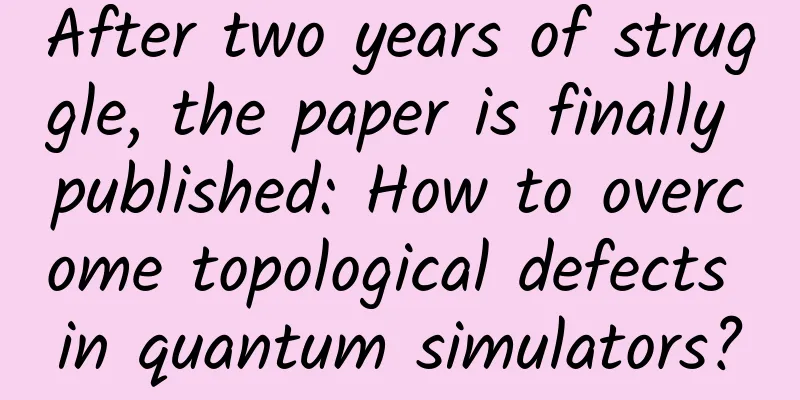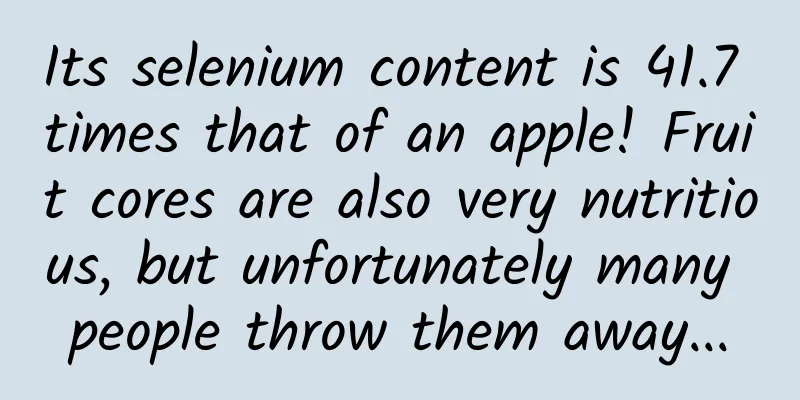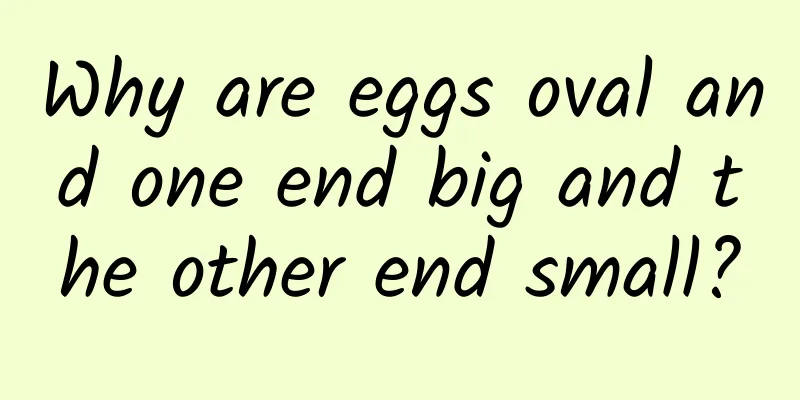After two years of struggle, the paper is finally published: How to overcome topological defects in quantum simulators?

|
After two years of fighting wits with reviewers, the paper on overcoming topological defects on quantum simulators was finally published. The authors proposed a new quantum annealing algorithm to solve the combinatorial optimization problem with topological obstacles. Written by Yan Zheng (Department of Physics, Westlake University) If the work you are satisfied with is not appreciated by the reviewers and editors, how should you deal with it? I think it is understandable to switch to a lower-level journal or to submit to other journals of the same level. Today I want to talk about an attitude in the face of adversity and introduce an interesting work we have done recently. In 2019, I began to pay attention to the field of quantum annealing/adiabatic quantum computing. The core idea is that a large class of quantum computing problems is essentially a combinatorial optimization problem, which can be reduced to the problem of solving the spin glass ground state. If we can find a good algorithm to find the optimal solution from an exponentially large number of nearly degenerate states, this problem will be solved. Of course, it is currently believed that the quantum annealing algorithm is a powerful tool for dealing with such problems, and the quantum annealing machine is relatively easy to build. D-wave has already commercialized it. Based on my long-term experience in studying frustrated systems, I immediately realized that if the problem to be optimized has some low-energy constraints, it is very likely that there are some topological defects, which make the ground state topologically protected, and it is difficult to reach the optimal solution through ordinary quantum algorithms. This is exactly the opposite of topological quantum computing: in topological quantum computing, topological properties can protect quantum bits from being affected by the environment; while in optimization problems, topology hinders quantum computing. So when encountering such combinatorial optimization problems, is there an efficient quantum algorithm to solve them? Although such questions have not been formally proposed in theory, relevant discussions have been widely held in the field of quantum simulation. For example, recent systems such as Rydberg arrays and superconducting circuits [1-9] are keen to realize interesting physics in lattice gauge fields. This involves the question of how to cross topological classes to prepare states on quantum simulators. Based on this, my research team, including Professor Meng Ziyang from the University of Hong Kong, Zhou Zheng from the Perimeter Institute for Theoretical Physics in Canada, Professor Wang Yancheng from the Sino-French Academy of Aeronautics at Beihang University, Professor Qiu Xingze from Tongji University, Zhou Yanhua from Chongqing University, and Professor Zhang Xuefeng, proposed a new quantum annealing algorithm, scanning quantum annealing, to solve combinatorial optimization problems with topological obstacles. This work clearly raises new problems (topological obstacles appear in combinatorial optimization problems), and also provides a new quantum annealing algorithm to solve it, and it is easy to implement on quantum simulators. We believe that this work is very innovative and is one of the few works that I am relatively satisfied with. As early as May 2021, we posted the paper on arXiv. However, after the formal submission, the review process was very bumpy. The reviewer of a certain L journal asked directly: "Since your method is so superior, here is a book on quantum computing. You should solve one or two typical problems in the book." In fact, the problems in the book have nothing to do with topological defects. After the first round of replies and explanations, the reviewers were still indifferent, so we had to transfer to a certain A journal, but the reviewers still insisted on asking us to solve several quantum computing problems in a textbook that do not have topological obstruction properties. In desperation, I once planned to give up publishing and leave this article on arXiv. But thinking of the many innovative aspects of this work, I was unwilling to give up, and finally decided to switch to other journals. Recently, the paper was finally accepted for publication [npj Quantum Information 9, 89 (2023)]. It took two years and several twists and turns. I almost gave up, which was a pity. In fact, I personally love and hate the review system. What I hate is that it wastes a lot of precious time of researchers to do some so-called "paper work". In order to meet the requirements of reviewers, they have to go through a lot of trouble. Sometimes the additional work is even equivalent to the amount of completing a new work, but the scientific significance of the article itself is not necessarily improved. In many cases, reviewers add some irrelevant difficulties to make themselves feel important, which is time-consuming and labor-intensive. What I love is that it sets a basic threshold for scientific research, keeps a lot of erroneous research out of the door, and at least guarantees the rigor and correctness of scientific research papers to a certain extent. In addition, the reviewer's rejection often forces people to think about the deeper physical connotations, which allows the author to survive and fight back. For example, my previous article on entanglement spectrum [Nature Communications 14, 2360 (2023)] solved the computational difficulty of extracting the entanglement spectrum of large-scale systems, but the reviewers were still not satisfied. Under strong pressure, we further proposed the wormhole effect on the path integral of the reduced density matrix, which made Haldane's entanglement spectrum conjecture very well explained and generalized. I think if the reviewers hadn't pushed us so hard, the wormhole effect on the path integral would not have been discovered and proposed in this work. The core idea I want to express has come to an end. I hope you can face challenges head-on and stick to your true self in scientific research. Don't give up easily on a job that you are satisfied with. Now I would like to spend some time to introduce my work. First, let's briefly introduce spin glass and quantum annealing. Spins and quantum bits can actually be considered equivalent, and are essentially two-level systems. Spin glass is a multi-body system in which a bunch of spins are coupled with irregular strengths. Generally speaking, In traditional statistical physics, spin glass itself has been a long-standing and difficult problem. As shown in Figure 1(a), there are a large number of nearly degenerate configurations in the configuration energy diagram of spin glass, which are what we often call local minimum states. These states will greatly hinder the system from reaching the true ground state. Once an evolving system is captured by a local minimum state, it is difficult to escape and it will think that it has reached the ground state. The so-called quantum annealing makes it easier to find the ground state by enhancing the system's quantum tunneling effect. Figure 1. (a) Schematic diagram of annealing under the traditional glass model. The global optimal state can be found through quantum tunneling. (b) Optimization problem under lattice gauge field theory: How can quantum tunneling cross topological classes to find the global optimal state. Combined with the quantum simulation of the lattice gauge field model that I have been paying attention to, I quickly thought of an interesting question: If the problem to be optimized contains topological properties, how can the system reach the ground state? As shown in Figure 1(b), in addition to many nearly degenerate states of the optimization problem itself, there are also topological defects, which divide the low-energy effective space of the system into several topological classes. It is almost impossible to tunnel successfully between different topological classes through local quantum fluctuations. Obviously, the traditional quantum annealing algorithm has failed at this time, and it is crucial to design a new quantum annealing algorithm to overcome topological obstacles. Systems with such topological defects are actually very common. From an experimental point of view, the realization of lattice gauge fields, fractons, etc. through quantum simulators is currently a very important frontier. However, there are many sub-Hilbert spaces in these systems that cannot be connected through local quantum operations. So how to achieve the target state in the experiment itself involves the concept of crossing topological classes. Theoretically, when the system has a large energy scale, some configurations are relatively high-energy and will be projected away, and the low-energy effective space is a constrained space after removing these configurations. This is equivalent to an optimization problem with constraints, which of course is ubiquitous. For example, the Rubik's Cube and Push Box games that everyone often plays are essentially optimization problems under constraints. After analysis, a difficult optimization problem with topological properties should have the following characteristics: 1. There are many topological classes with nearly degenerate energy; 2. The topological class with the lowest energy occupies a very small proportion of the Hilbert space and is extremely difficult to find; 3. Other topological spaces with energy close to this are very large, which is conducive to quantum fluctuations. Combining some previous research work, my collaborators and I immediately identified an extremely simple model that meets the above conditions - the anisotropic triangular lattice antiferromagnetic Ising model. That is, the Ising interaction strength on the bond in the x direction is different from that in the other two directions. Figure 2. (a) Schematic diagram of a typical difficult topology optimization problem. (b) The low-energy effective configuration of the triangular lattice antiferromagnetic Ising model can be mapped to a dual hexagonal lattice dimer model. (c), (d), (e) Find the corresponding topological class interval in (a) on the triangular lattice antiferromagnetic Ising model. (f) Two high-energy point defects can turn the topological defect into a localized one. With the help of some configuration diagrams in Figure 2, we briefly introduce the low-energy constraints and topological properties of this model. It can be intuitively imagined that at low energy, the three spins on the vertices of the triangular lattice cannot simultaneously satisfy the opposite directions of each other. There must be an edge on each triangle with two spins in the same direction, while the other two edges satisfy the opposite directions of the spins. We call this the triangle rule. It can be seen that all configurations in (b), (c), (d), and (e) satisfy this condition. We make a simple mapping, as shown in Figure 2(b), fill the edges of the triangle with spins in the same direction with a coarse bond, and fill the rest with fine bonds. The triangle rule is mapped to a hexagonal dimer configuration, which satisfies the constraint that there is only one dimer on each lattice point. This is actually a local conservation condition, corresponding to local symmetry. In fact, it corresponds to a U(1) lattice gauge theory, which is not the focus here and will not be elaborated. It can be imagined that if it is an isotropic Ising model, then all configurations that satisfy the triangle rule are strictly energy degenerate and are all the ground state of the system. If we make Jx slightly smaller, then Figure 2(c) will become the ground state of the system, and all spins in the same direction will tend to be placed in the x direction to minimize the energy. In such a configuration, any flip of a spin will destroy the so-called triangle rule, thereby causing a very high energy excitation cost. Therefore, this state forms a very small topological class at low energy, and the Hilbert space it occupies is extremely small. Therefore, the search for this target state is itself an extremely difficult topological optimization problem! We tried the commonly used uniform field quantum annealing scheme and random field quantum annealing scheme, and found that it was indeed as we thought. It is difficult for traditional methods to overcome the robustness of topological protection. Even if they spend a long time, they cannot get out of the current topological class, as shown in Figure 3 (QA and QA-h lines). To solve the annealing difficulties caused by this topology, we found that there are two factors that need to be considered: First, in a two-dimensional system, the topological defect is a line defect. Ordinary quantum fluctuations can twist the shape of this line but cannot eliminate/generate a line; second, the quantum fluctuation term in the quantum annealing process is actually highly controllable and is not limited to local fluctuations. Based on the above two considerations, That is, a transverse field is applied to all grid points i on a line. It can be imagined that when the transverse field intensity is very large, it is equivalent to decoupling the Ising interaction between the quantum bits on this line and the surrounding quantum bits, that is, cutting an edge on an Ising interaction model. Slowly reducing this annealing term is equivalent to gradually transitioning the open boundary condition to the closed boundary condition. Figure 3. The lowest energy that uniform field quantum annealing (QA), random field quantum annealing (QA-h) and scanning quantum annealing (SQA) converge to over the quantum Monte Carlo simulation time. Only SQA crosses the topological class to reach the true ground state. For simplicity, we set this linear annealing term to a straight line shape, and repeat the annealing process from "open edge" to "closed edge" along the entire system, and on this basis, still add the original point annealing as the background of the whole process. Under this setting, we found that the topological defect can be moved out of the "boundary" in the case of "open edge", which is equivalent to annihilating/generating a topological defect. We named this annealing scheme Sweeping Quantum Annealing (SQA). Under this setting, we can quickly find the global optimal state across topological classes, as shown in Figure 3 (SQA line). Due to space limitations, interested students and teachers can refer to our recent article [npj Quantum Information 9, 89 (2023)] for details. References [1] Satzinger, KJ et al. Realizing topologically ordered states on a quantum processor. Science 374, 1237–1241 (2021). [2] Semeghini, G. et al. Probing topological spin liquids on a programmable quantum simulator. Science 374, 1242–1247 (2021) [3] Li, K. et al. Experimental identification of non-abelian topological orders on a quantum simulator. Phys. Rev. Lett. 118, 080502 (2017). [4] Lumia, L. et al. Two-dimensional z2 lattice gauge theory on a near-term quantum simulator: variational quantum optimization confinement and topological order. PRX Quantum 3, 020320 (2022). [5] Yan, Z., Wang, Y.-C., Samajdar, R., Sachdev, S. & Meng, ZY Emergent glassy behavior in a kagome Rydberg atom array. Phys. Rev. Lett. 130, 206501 (2023). [6] Yan, Z., Samajdar, R., Wang, Y.-C., Sachdev, S. & Meng, ZY Triangular lattice quantum dimer model with variable dimer density. Nat. Commun. 13, 5799 (2022). [7] Yan, Z. et al. Fully packed quantum loop model on the triangular lattice: Hidden vison plaquette phase and cubic phase transitions. Preprint at https://arxiv.org/ abs/2205.04472 (2022). [8] Zhou, Z., Yan, Z., Liu, C., Chen, Y. & Zhang, X.-F. Quantum simulation of two dimensional U(1) gauge theory in Rydberg atom arrays. Preprint at https:// arxiv.org/abs/2212.10863 (2022). [9] Ran, X. et al. Fully packed quantum loop model on the square lattice: phase diagram and application for Rydberg atoms. Phys. Rev. B 107, 125134 (2023). This article is supported by the Science Popularization China Starry Sky Project Produced by: China Association for Science and Technology Department of Science Popularization Producer: China Science and Technology Press Co., Ltd., Beijing Zhongke Xinghe Culture Media Co., Ltd. Special Tips 1. Go to the "Featured Column" at the bottom of the menu of the "Fanpu" WeChat public account to read a series of popular science articles on different topics. 2. Fanpu provides a function to search articles by month. Follow the official account and reply with the four-digit year + month, such as "1903", to get the article index for March 2019, and so on. Copyright statement: Personal forwarding is welcome. Any form of media or organization is not allowed to reprint or excerpt without authorization. For reprint authorization, please contact the backstage of the "Fanpu" WeChat public account. |
Recommend
If Alibaba is not short of money, why does it still issue bonds?
After raising $25 billion in IPO financing, Aliba...
The ghost of a wronged woman turned into a bird? The name may sound bitter, but I am super cute!
In the early morning or evening of early summer, ...
In order to prevent the bird from being "reckless", do this now
Birds are the most common "animal neighbors&...
Creative strategies for placing wedding photography information flow ads!
As my country's economy is performing well ov...
8 optimization tips for bidding promotion!
Have you ever experienced the adjustment from pla...
Google pushes Android 14 QPR2 Beta1 system version, Pixel 4a (5G) and subsequent models can get the update
IT Home reported on November 16 that Google today...
Top Growth Hackers: How to Use Data Experimentation to Build a Growth Engine
Growth hackers are the real source of revenue for...
After finding the black box, how many more steps are needed to analyze the cause of the accident?
The search for the cause of the crash of China Ea...
The trouble behind the popularity of voice search: Google is having trouble monetizing
Foreign media TheStreet wrote that Google has a d...
Collection: 68 information flow ads and SEM learning website resources are available for free!
01. CNZZ -UDplus Website: udplus.umeng.com Note: ...
The death of Qvod: China's Internet policy dividend period has ended
The topic about Kuaibo and Wang Xin is very sensi...
How to place massive Qianchuan search ads?
Qianchuan has fully opened up the delivery of sea...
Monkeypox cases have been reported in many countries around the world. Learn some key facts about monkeypox in this article!
Recently, several countries including the United ...
Nearly 180,000 users signed up for a live broadcast event in more than a month. This is what I am most interested in!
Yesterday I saw an activity forwarded by a friend...
Why don't many phones have a mute button?
"Why can't Android phones basically have...









